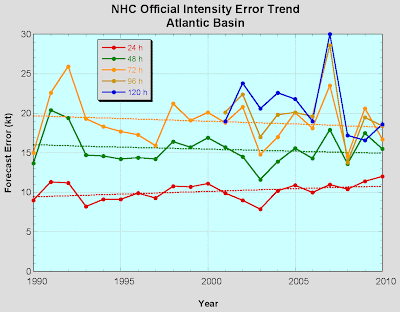Well, if hurricanes are on one side of the meteorological spectrum, what is on the other?
You guessed it...fog, and folks the Northwest is entering fog season. In fact, September and October are the foggiest time of the year around here, NOT the middle of the winter.
On Sunday I got to experience fog first hand--I was heading to Bellingham to do some kayaking near Lummi Island (Elakah kayak). Seattle was densely fogged in, but every time we gained a few hundred feet elevation on I5 we escaped the shallow fog. This was quite shallow stuff...a few hundred feet at most. On the water near Lummi we were in dense fog until it lifted around noon. Here is the visible satellite picture before it burned off.
One thing we have learned from satellite imagery is that fog burns in from the sides.
The irony is that REALLY dense fog, like on Sunday, is generally a good indicator of clearing later in the morning.
So why is the fall our big fog season? The nights are getting long...that certainly helps, allowing more time for the air to cool to saturation (the dew point). Relatively clear skies, since the storm season has not arrived yet. Clear skies allows infrared radiation loss to space from the earth...giving us the needed cooling. The atmosphere is relatively stable this time of the year, since the air aloft is relatively warm compared to the surface at night. Warm air above cool, dense air is stable, and fog loves stability.
The least foggy time of the year here? Spring!
And now a few comments and announcements.
First, the award for the absolutely dumbest opinion piece I have read in a long time--goes to foxnews.com for suggesting that the National Weather Service is unnecessary and should be sold off. Here it is:
http://www.foxnews.com/opinion/2011/08/27/do-really-need-national-weather-service/
A sample of this foolish piece: why do we need the National Weather Service when we can get our forecasts from the Weather Channel? Folks, who do you think gathers all the observations and runs all the computer models? Where do you think the Weather Channel gets this information from? I could list a dozen more, but you get the idea. We are talking completely brain dead. How could Fox News publish such trash?
Second announcement: just a reminder I will start my new weather program on KPLU-FM at 9 AM this Friday. And I plan to talk about hurricanes...OUR HURRICANES. You can listen on the web, at 88.5 in the Puget Sound area, and additional frequencies at other locations (check their web site for the repeater stations--link to the right).
 |
| Recent fog picture courtesy of the Seattle Times |
On Sunday I got to experience fog first hand--I was heading to Bellingham to do some kayaking near Lummi Island (Elakah kayak). Seattle was densely fogged in, but every time we gained a few hundred feet elevation on I5 we escaped the shallow fog. This was quite shallow stuff...a few hundred feet at most. On the water near Lummi we were in dense fog until it lifted around noon. Here is the visible satellite picture before it burned off.
One thing we have learned from satellite imagery is that fog burns in from the sides.
The irony is that REALLY dense fog, like on Sunday, is generally a good indicator of clearing later in the morning.
So why is the fall our big fog season? The nights are getting long...that certainly helps, allowing more time for the air to cool to saturation (the dew point). Relatively clear skies, since the storm season has not arrived yet. Clear skies allows infrared radiation loss to space from the earth...giving us the needed cooling. The atmosphere is relatively stable this time of the year, since the air aloft is relatively warm compared to the surface at night. Warm air above cool, dense air is stable, and fog loves stability.
The least foggy time of the year here? Spring!
And now a few comments and announcements.
First, the award for the absolutely dumbest opinion piece I have read in a long time--goes to foxnews.com for suggesting that the National Weather Service is unnecessary and should be sold off. Here it is:
http://www.foxnews.com/opinion/2011/08/27/do-really-need-national-weather-service/
A sample of this foolish piece: why do we need the National Weather Service when we can get our forecasts from the Weather Channel? Folks, who do you think gathers all the observations and runs all the computer models? Where do you think the Weather Channel gets this information from? I could list a dozen more, but you get the idea. We are talking completely brain dead. How could Fox News publish such trash?
Second announcement: just a reminder I will start my new weather program on KPLU-FM at 9 AM this Friday. And I plan to talk about hurricanes...OUR HURRICANES. You can listen on the web, at 88.5 in the Puget Sound area, and additional frequencies at other locations (check their web site for the repeater stations--link to the right).










 Click for video
Click for video















































